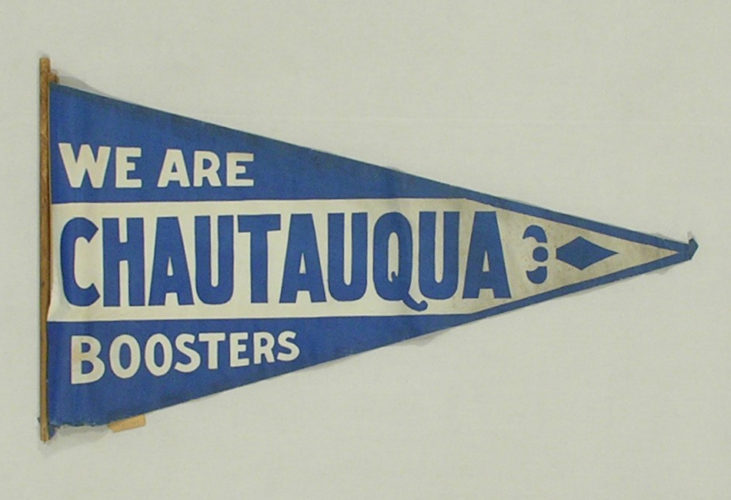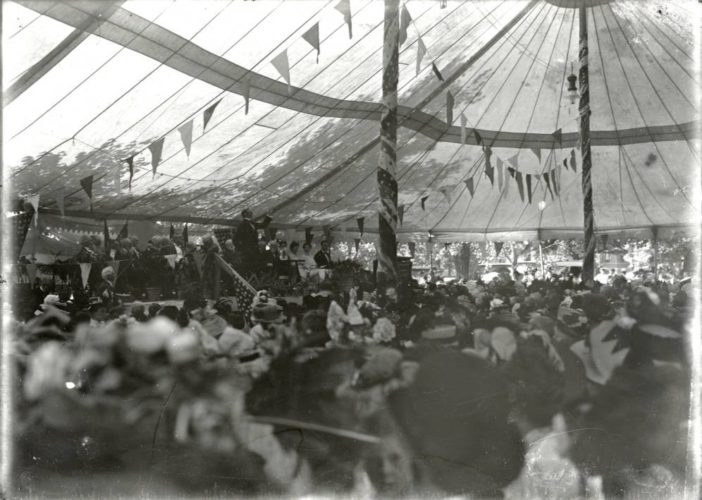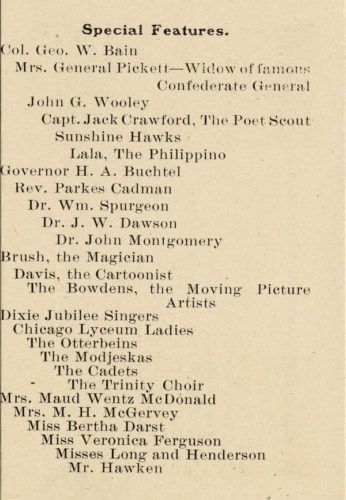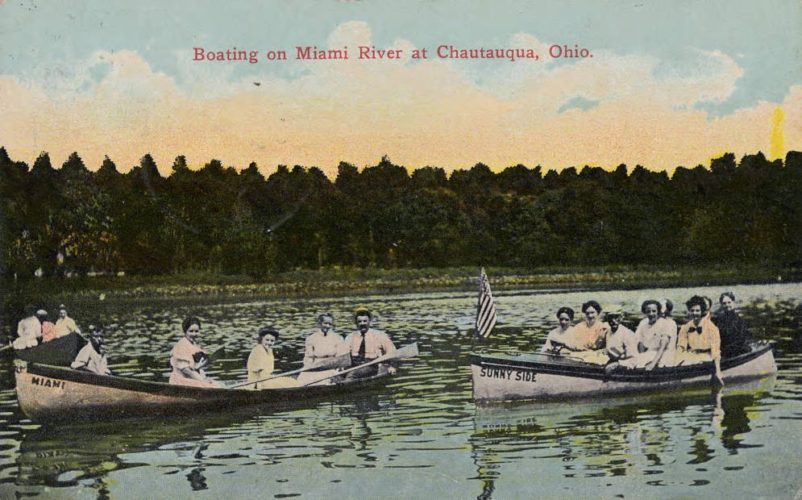Talking About Chautauqua

Starting tomorrow and continuing each Saturday in June, the Echoes in Time Theatre at the Ohio History Center will feature a performance of “Preaching, Music and Speechifying! The Lakeside Chautauqua,” and Ohio Humanities is gearing up for its 20th annual tour of Ohio Chautauqua beginning on June 5th. What is a Chautauqua, you ask? Let’s take a look at this historical movement and its ties to Ohio!
Chautauqua was a movement popularized during the late 19th and early 20th centuries, focusing on adult and community education through gatherings and assemblies organized in public spaces. The first Chautauqua was held in 1874 along Chautauqua Lake in western New York, just east of the Pennsylvania state line and only miles from Lake Erie. The movement’s name came from its original location next to the eponymous lake, from a word commonly believed to mean “a bag tied in the middle” in the extinct Erie language (and an accurate description of the lake when viewed from above). The original goal of the “Chautauqua Assembly,” as it was first known, was to educate Sunday school teachers in a non-denominational manner, though its roots were Methodist. Its co-founders were John Heyl Vincent, a Methodist minister, and Lewis Miller, an Ohio businessman, inventor and philanthropist who was also the father-in-law of Thomas Edison.


The outdoor educational format pioneered by Vincent and Miller proved remarkably popular, and soon, similar efforts were popping up in towns and communities far beyond New York. The meetings would take place either at dedicated sites, often closely modeled on the original Chautauqua Lake example, or in locales like amusement parks or fairgrounds that were rented for the length of the program. Independent Chautauquas grew in popularity following the original 1874 event, and by the turn of the 20th century, “circuit” Chautauquas that traveled the country were increasingly common.
The movement was most popular in the country’s rural and smaller communities, as it offered a unique and exciting opportunity for entertainment and culture to attendees in the form of lectures on a variety of topics, music, performances and religious instruction or preaching. The degree of religious or political bent varied by location and throughout the period of popularity, from heavily religious to nearly secular, and from a politically neutral attitude to one of fervent reform. A common slate of offerings can be seen in this 1907 program for an Antioch College Chautauqua, which included everything from “Mrs. General Pickett, Widow of [the] famous Confederate General” to “Ash Davis, Cartoonist Entertainer” to Colorado Governor Henry Buchtel, among many others.

Among Ohio’s connections to the Chautauqua movement is the Miami Valley Chautauqua, seen at right, which began in 1896 during a revival held by Reverend Thomas Harrison and by 1901 had found a permanent location in Warren County. In the 1930s, it became more recreational than religious, and by the 1960s it had year-round residents. The Miami Valley Chautauqua was sold in 1968, though the unincorporated community of Chautauqua, Ohio, still remains along the border between Warren and Montgomery Counties today. The Ohio History Connection archives also hold items related to Chautauquas in Brown County, Hopewell Grange, Greenfield, Piqua, New Carlisle, Summerfield and more.
For 50 years, the Chautauqua tent was a common sight in America’s rural towns, and at the height of the movement in the early 1920s, an estimated 30,000,000 Americans attended dramas, lectures, music, operas, orchestras and other cultural events under the auspices of a local Chautauqua–but as technologies advanced and new leisure-time activities became more accessible, the movement soon fell into decline. Nevertheless, the Chautauqua tradition is kept alive today across the country; here in Ohio, the Ohio Chautauqua explores a new theme each summer and brings the old-fashioned community experience to life for thousands of attendees, while the historic community of Lakeside along Lake Erie continues to welcome visitors from near and far to its Chautauqua experience, as it has for almost 150 years.
Thanks to Lily Birkhimer, Digital Projects Coordinator at the Ohio History Connection, for this week’s post!



Leave a Reply
You must be logged in to post a comment.